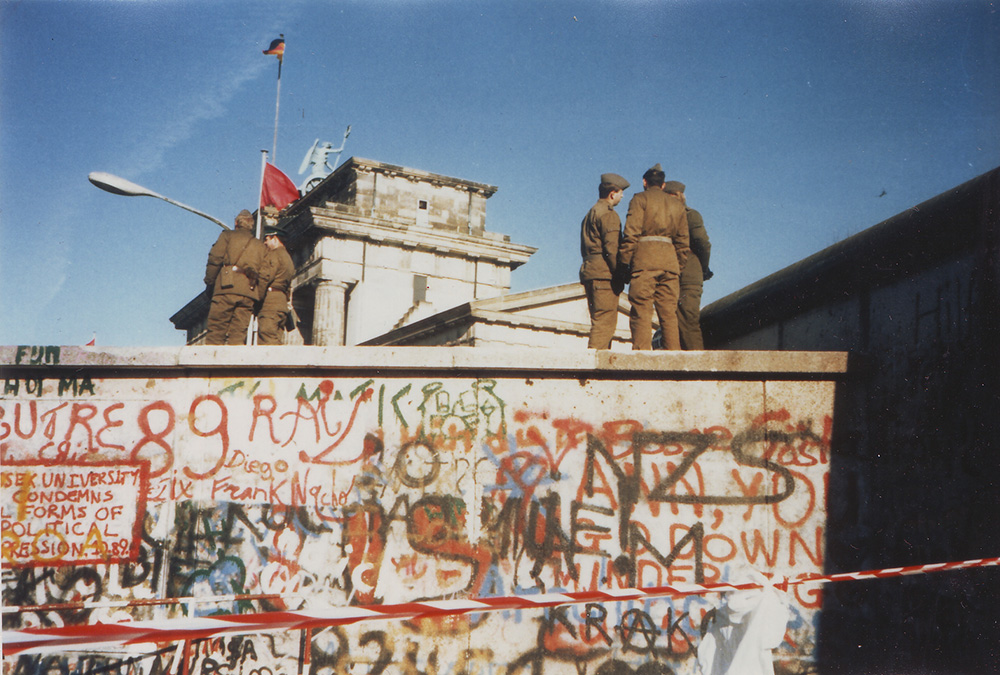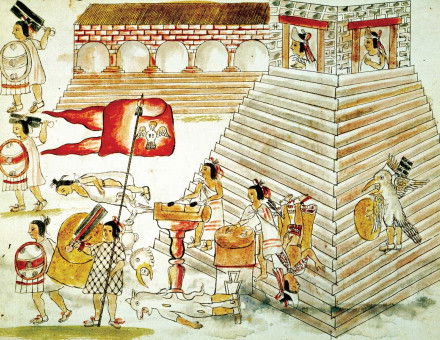All Among the Watchtowers
A new book claims to be the definitive history of the GDR. Is it? And don’t we have those already?

Perhaps more than any former Eastern Bloc state, East Germany continues to exude a strange fascination for many. Images of the Berlin Wall with its barbed wire, watch towers and ‘death strip’, as well as stories of the all-seeing, all-knowing State Security Service – the dreaded Stasi – have helped to cement the German Democratic Republic in the public imagination as the ultimate example of an oppressive communist police state. In contrast to scholarly research on the GDR, popular history books rarely consider what life was like for ordinary East Germans. Katja Hoyer seeks to fill this gap with Beyond the Wall, which arrives purporting to be ‘the definitive history’ of the self-proclaimed workers’ and peasants’ state.
Hoyer’s account of the history of East Germany begins in Moscow before the Second World War. Here we meet several German communists residing in exile to escape the Nazis. Two of them – Wilhelm Pieck and Walter Ulbricht – were later tasked with planning a new postwar order to be built on the ruins of Nazi Germany. When East Germany was founded on 7 October 1949, Pieck became its first president, but it was Ulbricht who held all the political power as First Secretary and de facto leader of the ruling Socialist Unity Party (SED). Hoyer then takes us on a chronological journey through East Germany’s short existence, from the construction and stabilisation of the SED state in the 1950s, to its consolidation in the 1960s, and onto the slow and steady decline of the regime from the mid-1970s to its ultimate and rather unexpected collapse in 1989.
The number of subjects that the book covers is impressive. Of course, there are the things that one would expect to read in a history of East Germany: the construction of the Berlin Wall in 1961 and its consequences, the development of the Stasi and stories of economic decline. But also covered are topics ranging from trade deals with the West and the state’s employment of foreign ‘guest workers’, to the shortage of coffee in 1977 and the production of the ubiquitous Trabant motor car. Especially interesting is Hoyer’s account of popular music in East Germany. Few readers will be familiar with the stars of East German pop, but home-grown singers such as Frank Schöbel and Nina Hagen, and bands such as City and the Puhdys, enjoyed great commercial success in East Germany (if not elsewhere). By touching on such diverse subjects, Hoyer – who was born in East Germany – presents the state as a place that was home to a ‘rich political, social and cultural landscape’.
The author’s narrative combines secondary source material with first-hand accounts to add colour and texture to her history of life under the SED regime. We hear from ordinary East Germans and gain insight into their thoughts and reactions to the world around them. Such vignettes bring Hoyer’s narrative to life; we read of tearful public eulogies to Stalin, how it felt to march in official parades and how, when the heating in Berlin Wall watchtowers broke down, border guards resorted to warming up concrete slabs with the heating elements from their hot plates. It is these snapshots of life beyond the Wall that will capture the imaginations of readers keen to learn and understand how ordinary people lived in East Germany.
The sheer number of subjects that Hoyer attempts to address, however, means that she often has to forgo in-depth analysis. Her coverage of the uprising of 17 June 1953, for example, is brief. The first uprising in the Eastern Bloc, it saw up to one million citizens across more than 700 cities, towns and villages vent their fury at Walter Ulbricht, demonstrating for the removal of the SED, for better living conditions, free elections and German reunification. Only the arrival of Soviet tanks and troops in the late afternoon saved the regime from catastrophe, and historians have long considered this show of mass dissent a decisive event in the history of the state, with far-reaching consequences. Other important subjects key to understanding the everyday experience of many in East Germany, such as the regime’s efforts to win over young people to its cause, or the reality of the state’s proclaimed full emancipation of women, do not receive the attention they deserve. Perhaps Hoyer could have taken a few more diversions away from the well-trodden path of subjects covered by other books on East Germany. Samuel Clowes Huneke’s recent research on the SED regime’s treatment of homosexuality could have made interesting and original inclusion. Clowes Huneke found that, although East Germany decriminalised homosexuality sooner than West Germany, the state used Stasi spies to infiltrate and keep a check on gay subcultures, perceiving them as a potential threat.
The boldest statement that the book makes is also its most intriguing. In her introduction, Hoyer states that she wants to show that East Germany was more than ‘Stasiland’: ‘It is time to dare to take a new look at the GDR … it’s time to take a serious look at the other Germany, beyond the Wall.’ Hoyer thus follows in the footsteps of a long line of scholars, most notably Mary Fulbrook, who have been pushing this same message since the early 2000s. Fulbrook and other historians including Paul Betts, Josie McLellan and Jan Palmowski have produced rich and sophisticated accounts of social and cultural life in East Germany. Hoyer’s ambition to chip away at narratives centred on ‘Stasiland’ is commendable, but whether it is such a new and daring approach is debatable.
So is this the ‘definitive history’ of East Germany? It is certainly a broad and wideranging study and there will be few who do not learn something new about life under the SED regime. The book’s greatest achievement will be to reveal to those not acquainted with the academic literature on East Germany that there was more to life beyond the Wall than barbed wire and watch towers.
Beyond the Wall: East Germany, 1949-1990
Katja Hoyer
Allen Lane, 496pp, £25
Buy from bookshop.org (affiliate link)
Richard Millington is Senior Lecturer in German at the University of Chester.






